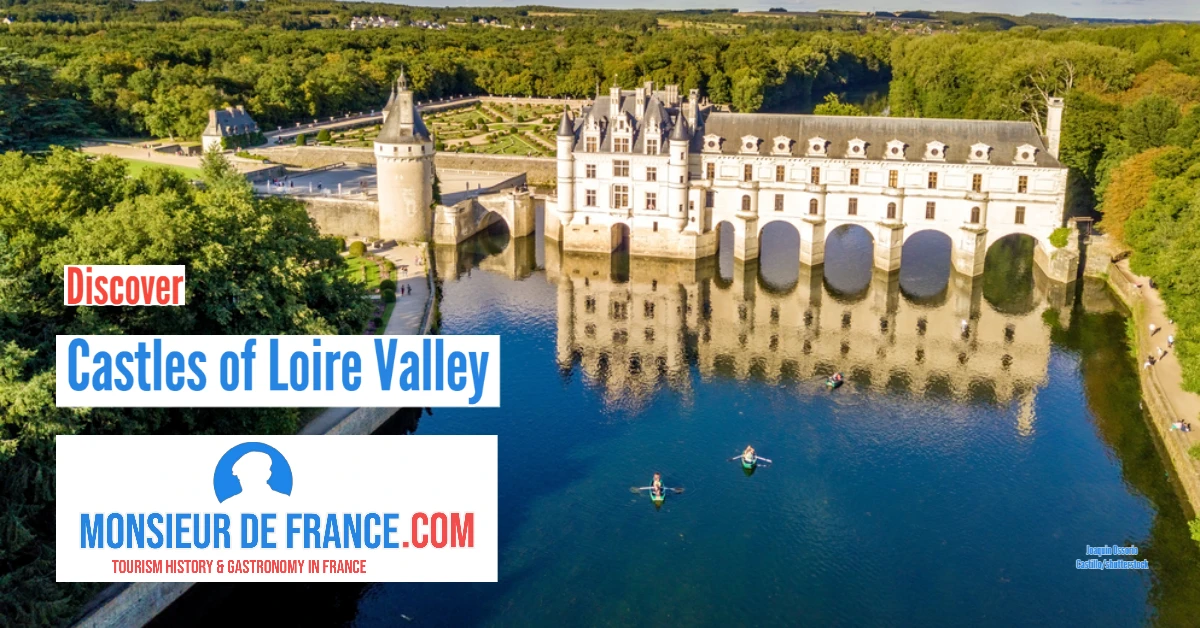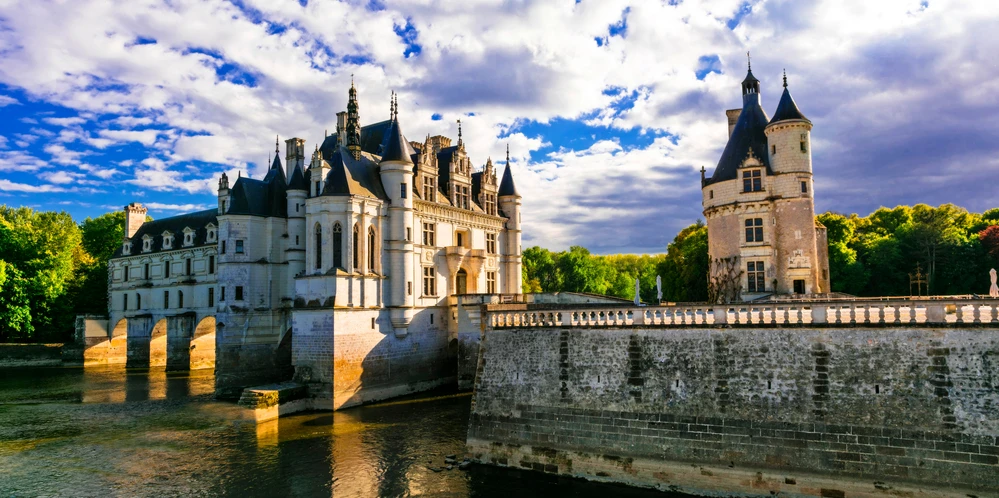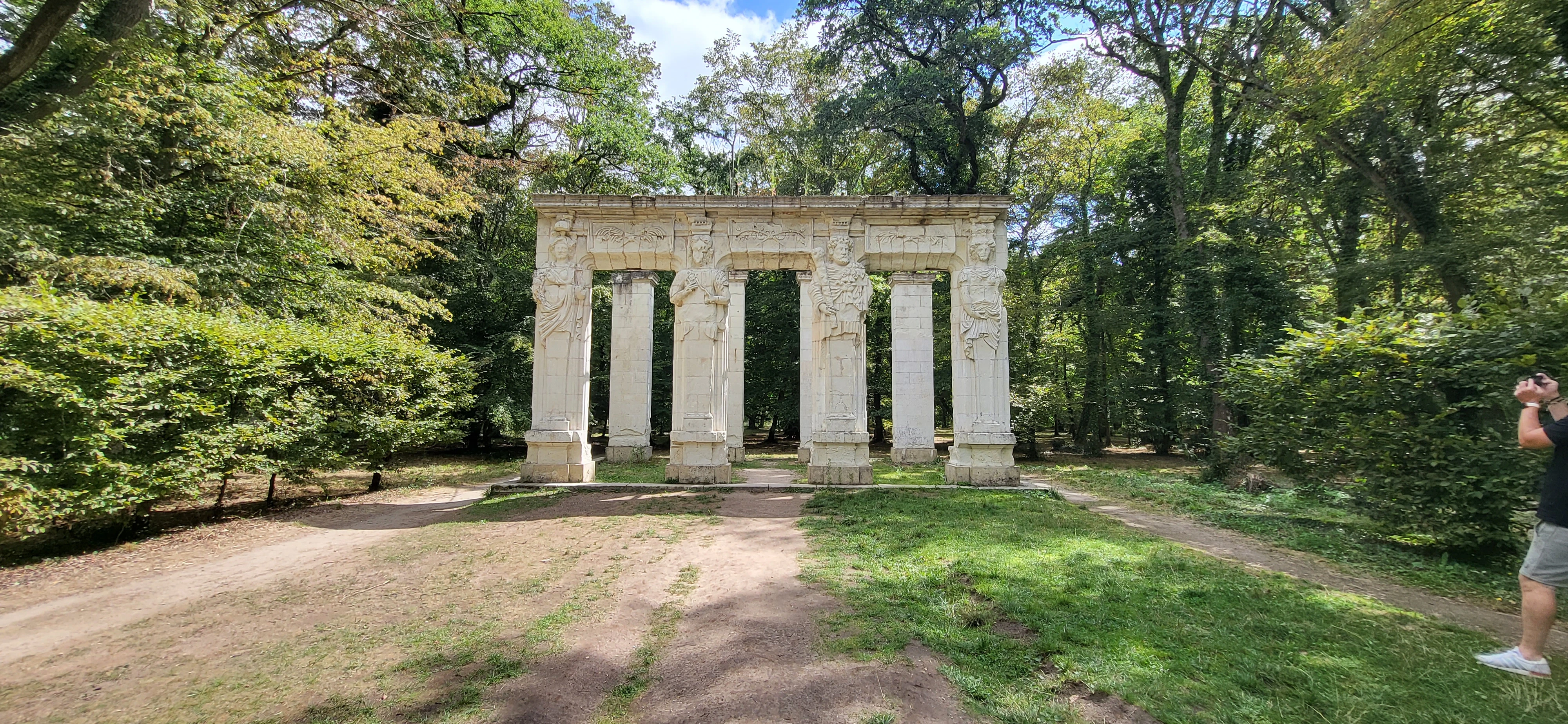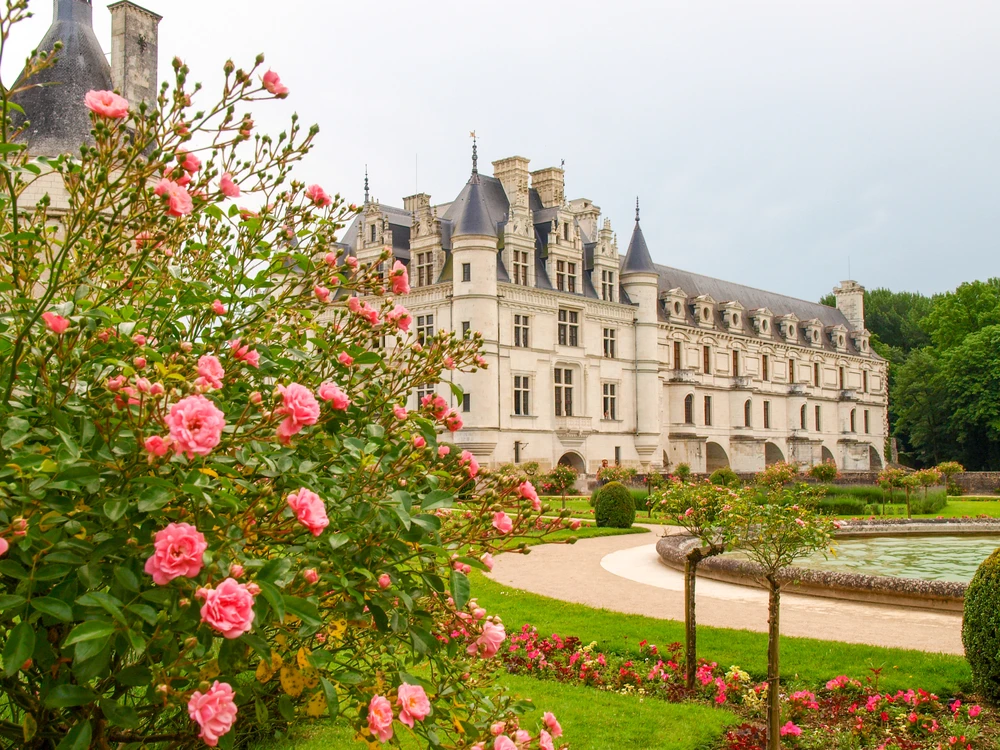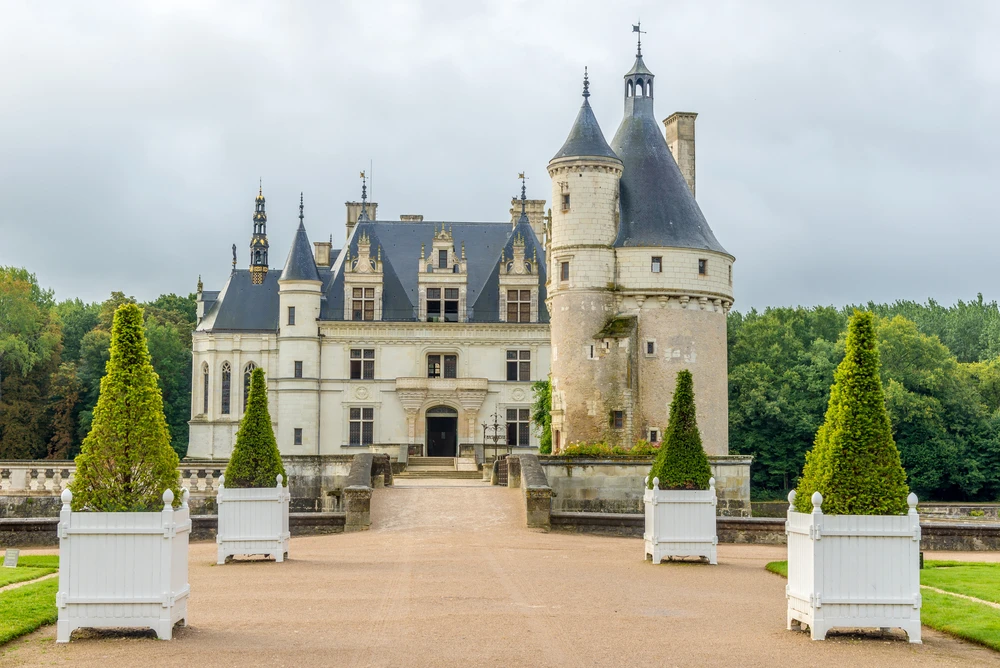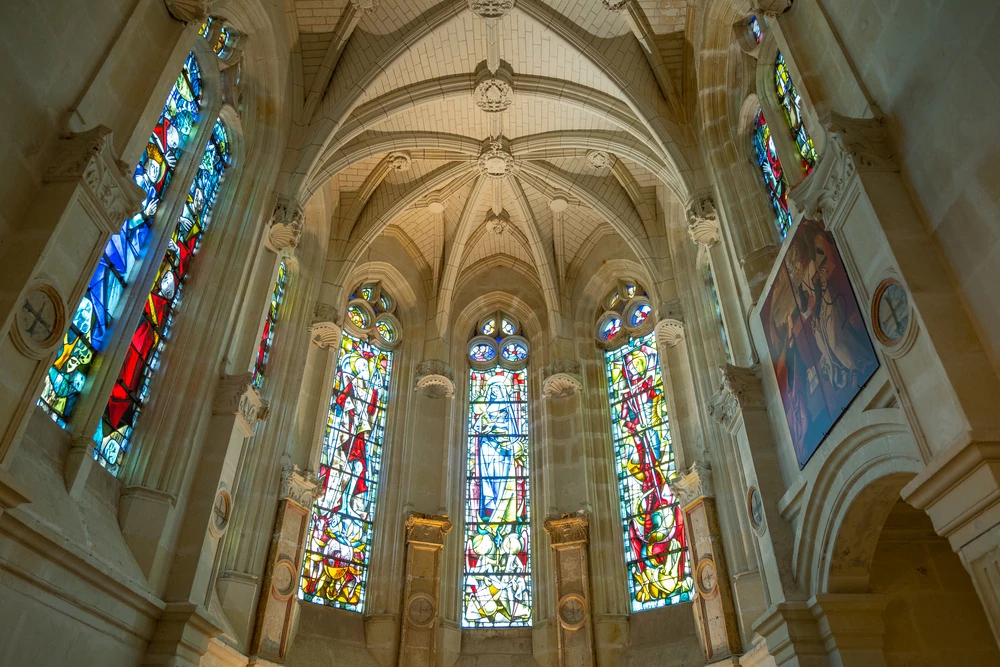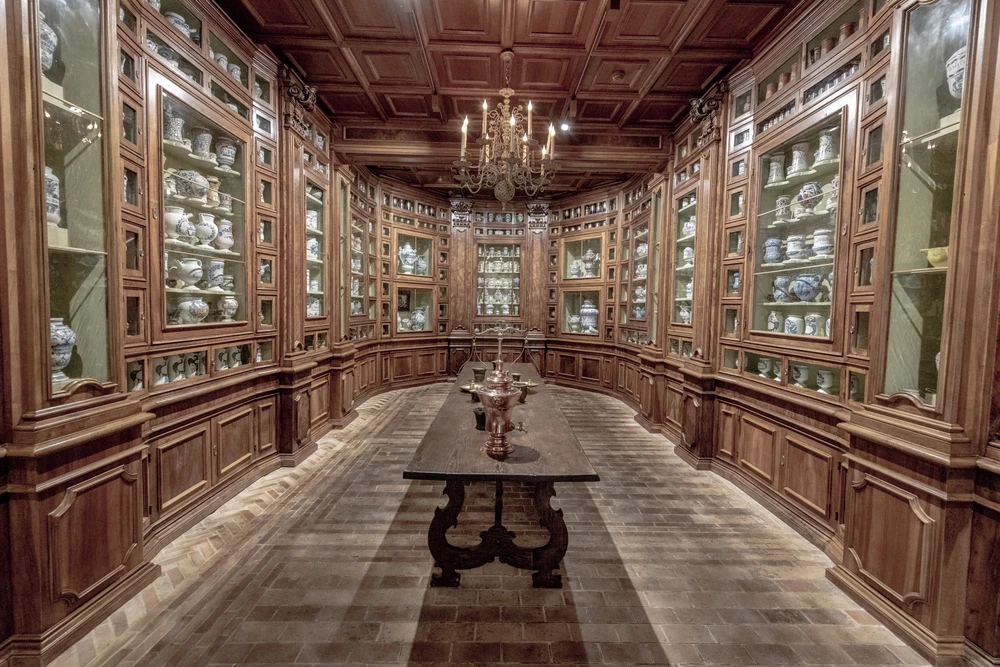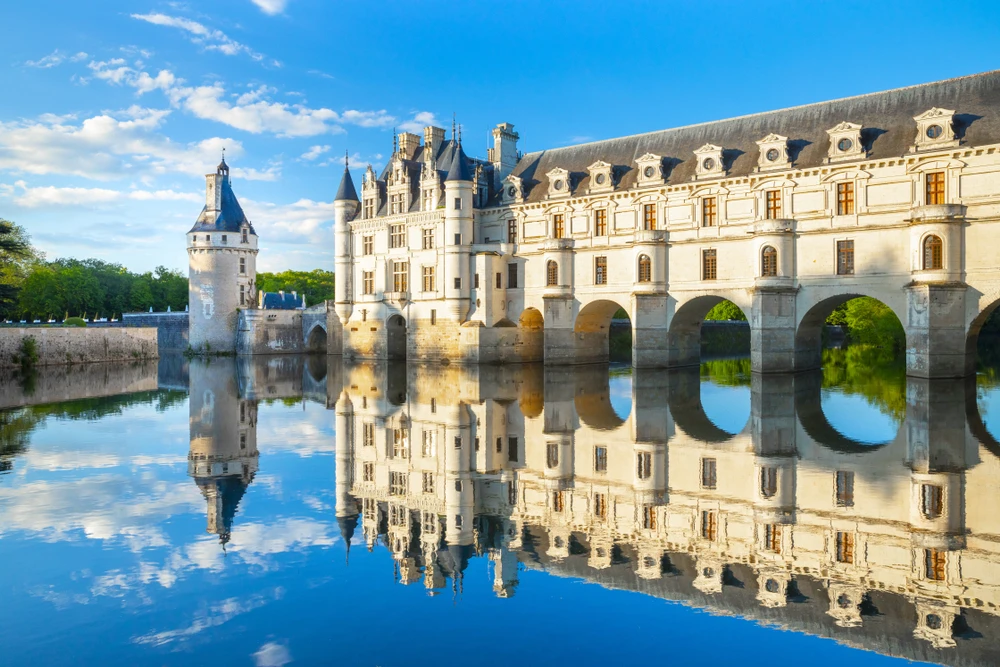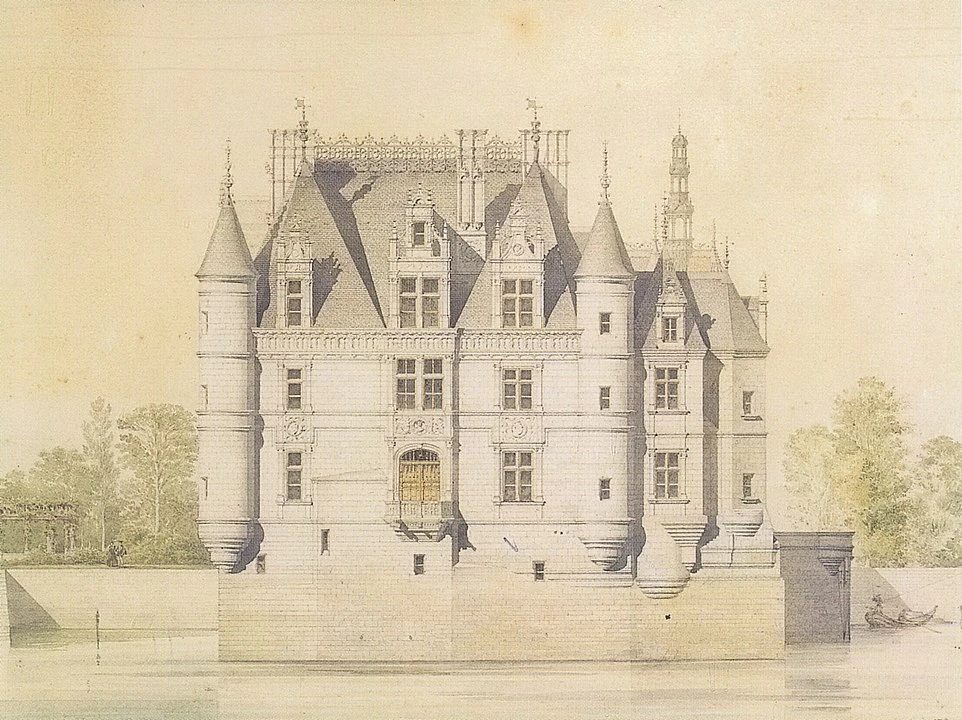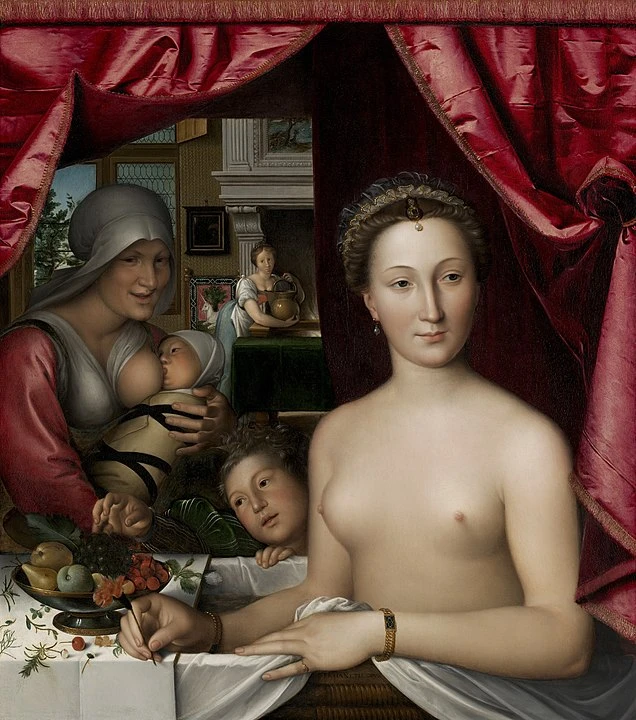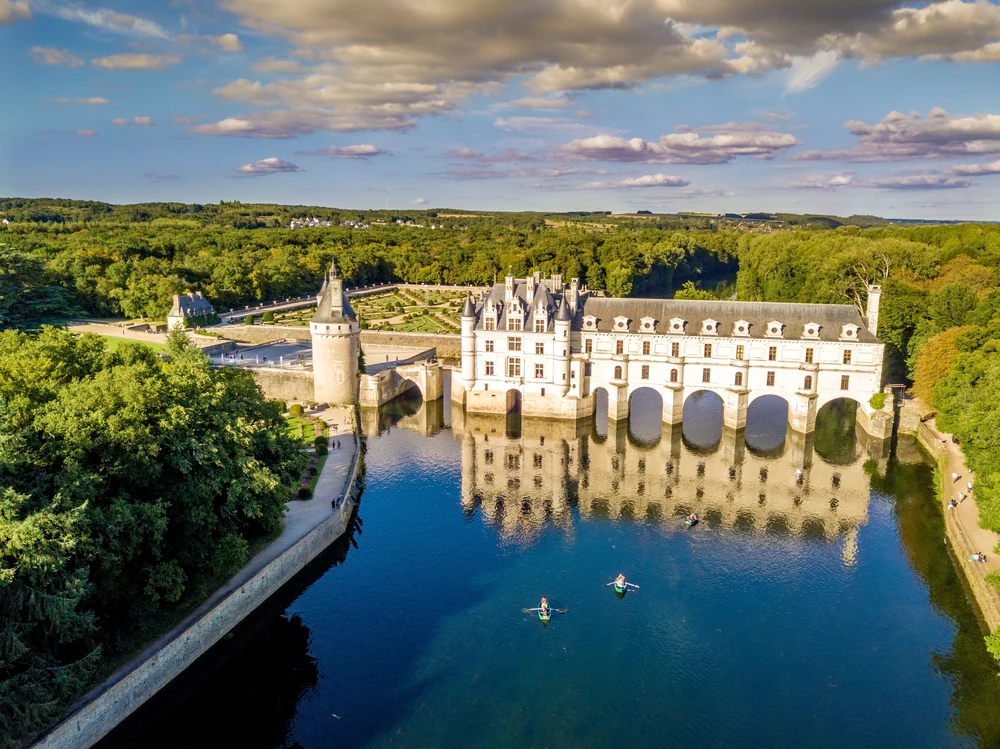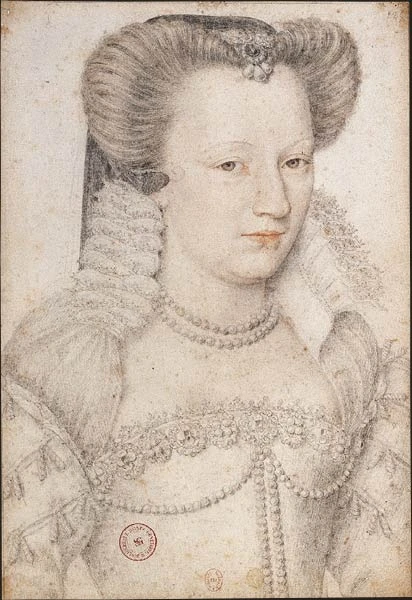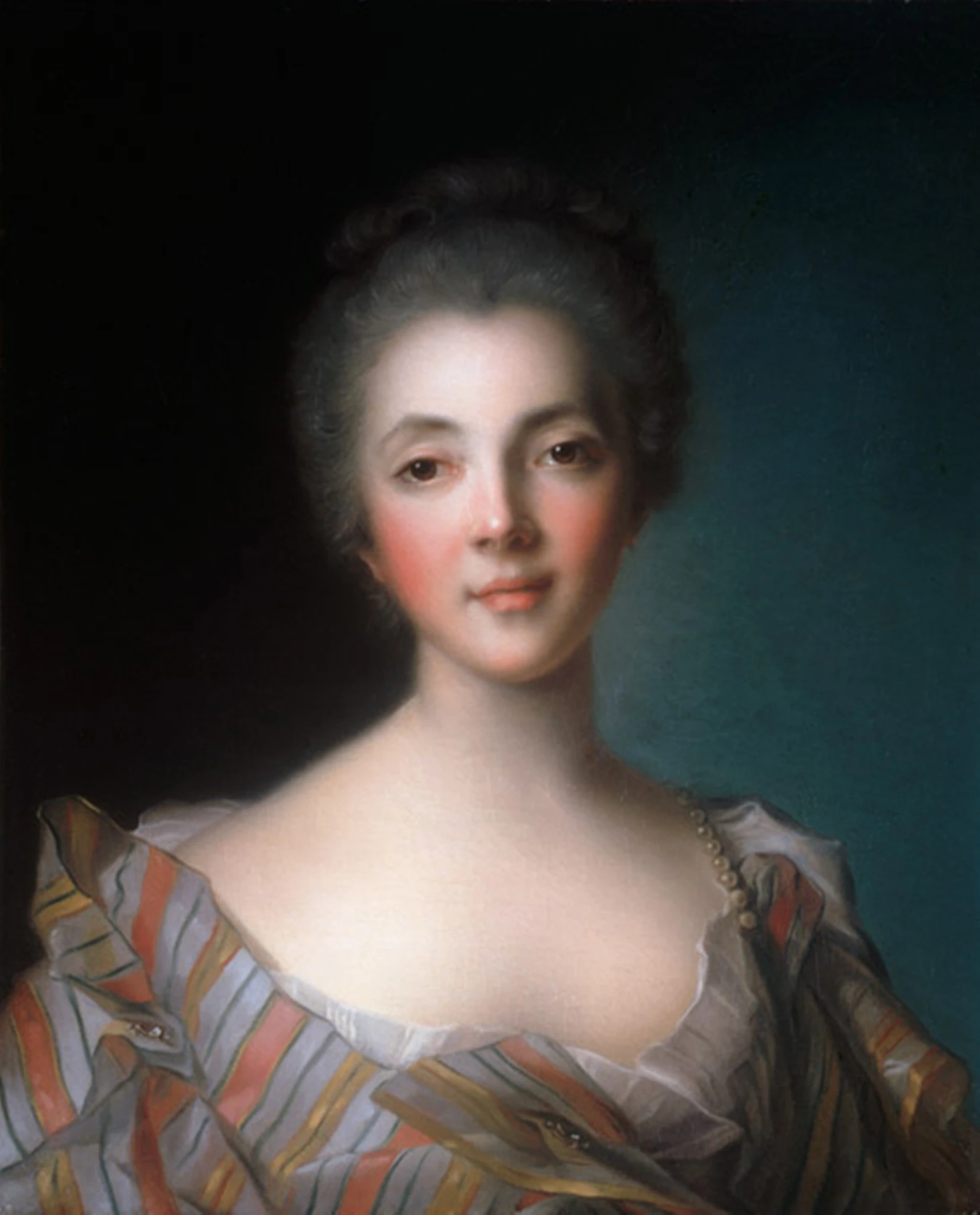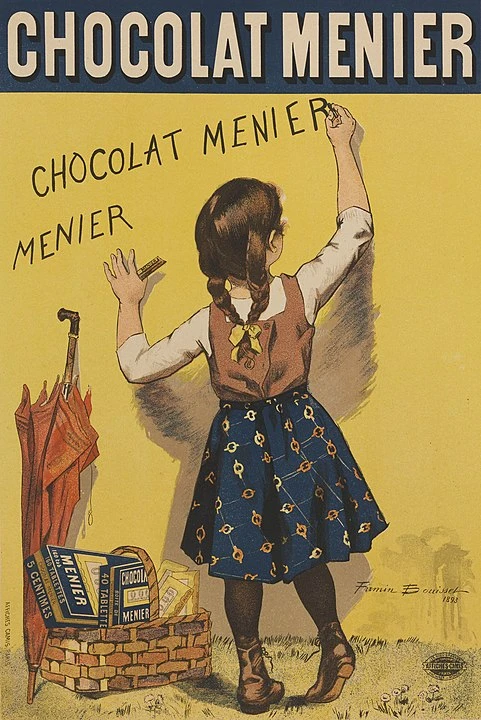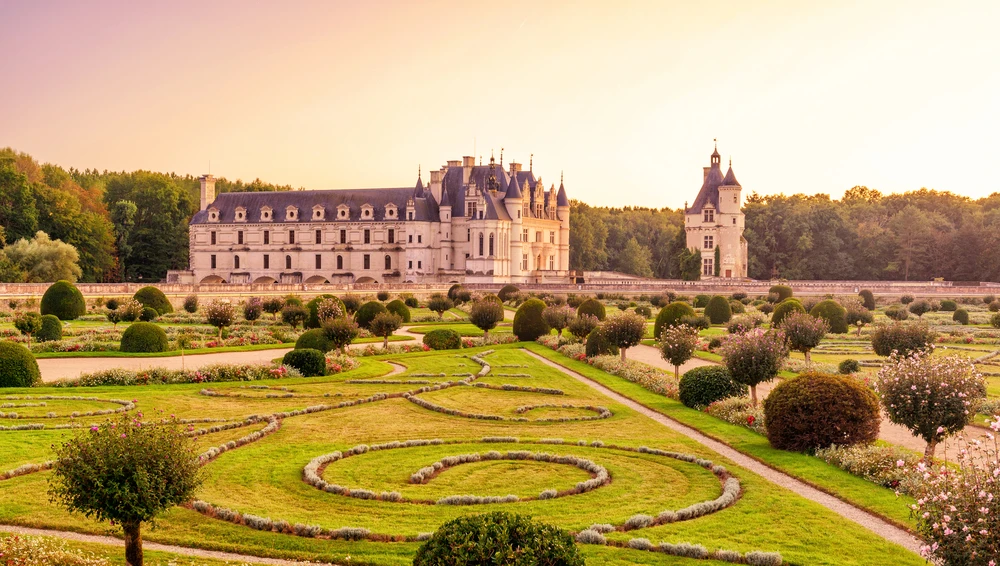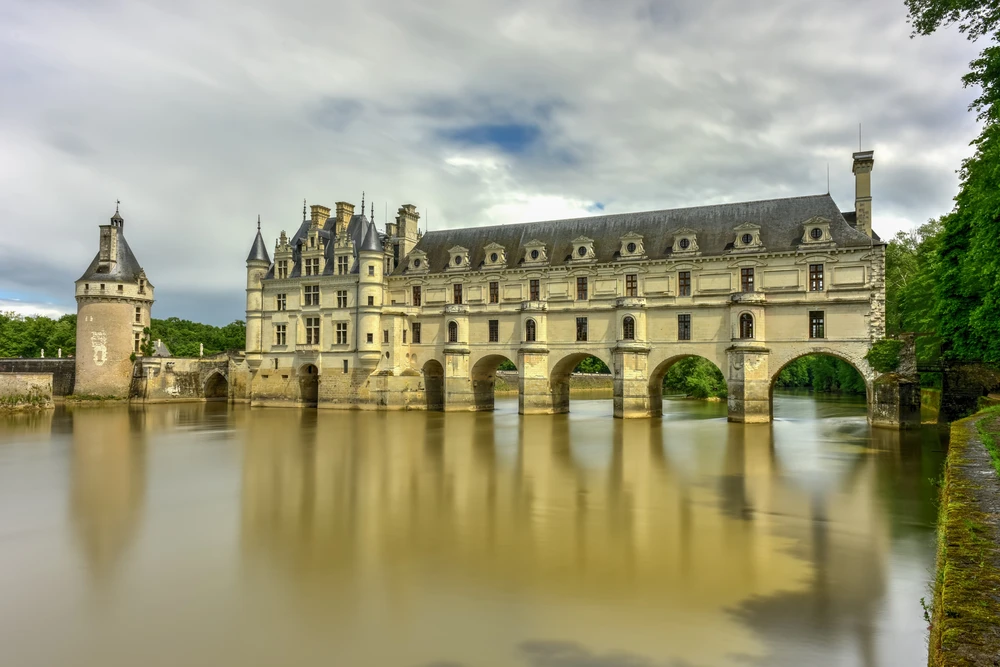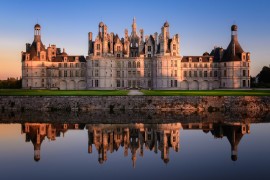There may be translation errors. Our translator went kayaking on the Cher during our report and we're still looking for him. The cook did the translation to help out... Thanks to her!
Chenonceau in a nutshell
Chenonceau. Photo chosen by Monsieurdefrance.Com: mawgli via Depositphotos.
Rising above the cher, it's a fairytale castle, where you can expect Prince Charming to appear at any moment, and you wouldn't even be surprised if the owner told you her name was Cinderella.Chenonceau is the castle of the ladies, because they made it into this marvel that continues to move us. Catherine Briçonnet took the castle out of the Middle Ages to turn it into a residence of pleasure. Henri II, King of France, gave it to the woman of his life, the sublime Dame de Poitiers, his mistress.It was she who had the idea of building a bridge to link the château to the other bank of the Cher. Catherine de Médicis, wife of Henri II, took her revenge on the death of her husband. She drove out Diana and gave the château its current appearance by having the bridge created by her rival covered over.Here, the widowed queen, dressed in black, dominates the Court, and knows everything thanks to her flying squadron, the pretty women who are all devoted to her and whom she sends to gather confidences on the pillows of the lovers she chooses for them.Queen Margot, the Queen of Pleasure, Mary Stuart, the beheaded Queen, Louise de Lorraine Vaudémont, the White Queen, the inconsolable widow of Henri III, also passed through Chenonceaux. Louise Dupin brought Chenonceau into the Age of Enlightenment, welcoming Jean Jacques Rousseau here.She saved Chenonceau from destruction by reminding the Revolutionaries that the château was a bridge, and that bridges can always be useful. Château, excuse me, madame! Later, Madame Pelouze showed off her lawns to the whole of Paris.Then the Menier family, of Menier chocolate fame, took over the château, which they still own today.With the Meniers, Chenonceau became a military hospital during the First World War, and during the Second World War the gallery became a clandestine crossing point to the Free Zone.Today, Chenonceau is one of France's most popular tourist destinations, with hundreds of thousands of visitors crossing the Cher every year to take a trip through history and visit Chenonceau le Château des dames .
What you will discover at Chenonceau
First the gardens
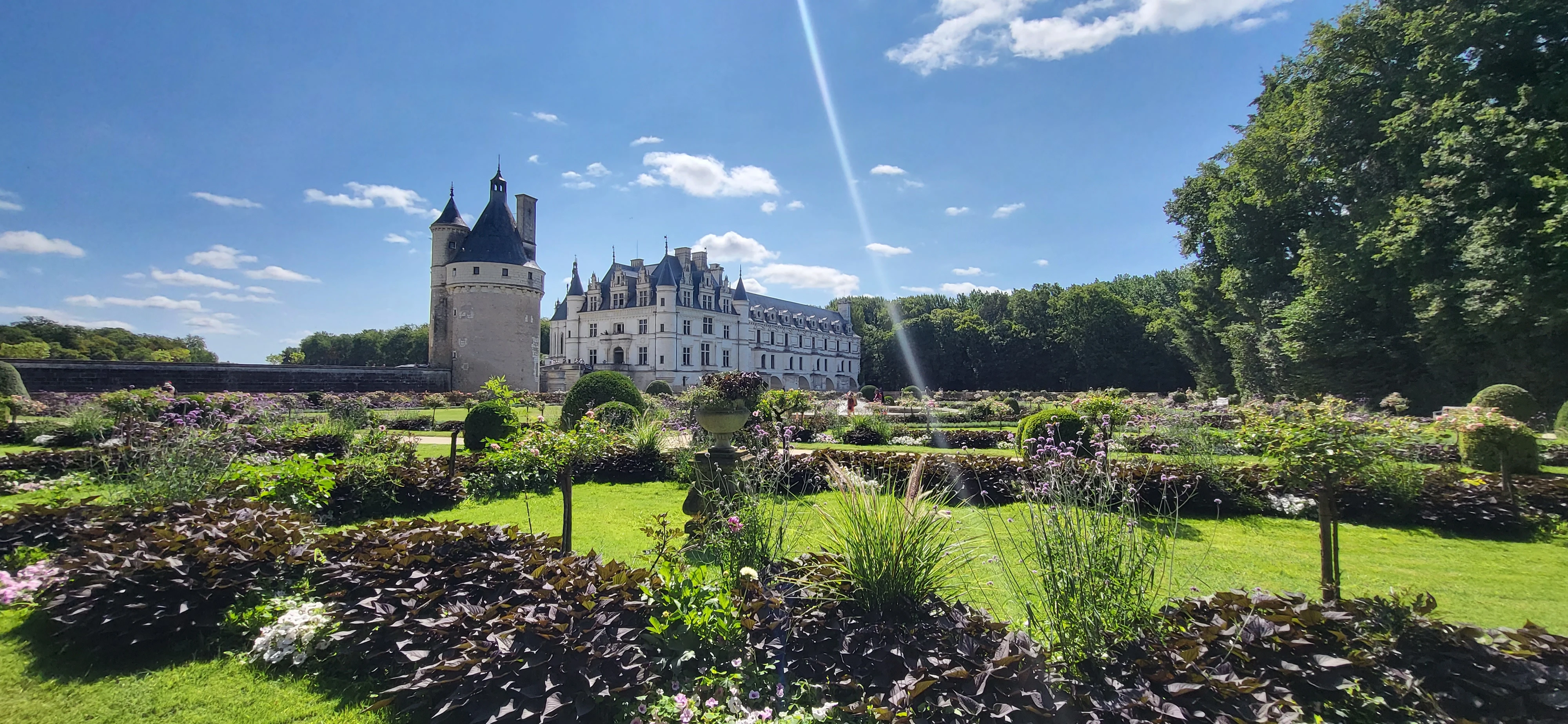 The château emerging from the Renaissance gardens. Photo chosen by monsieurdefrance.com: Jérôme Prod'homme (c)
The château emerging from the Renaissance gardens. Photo chosen by monsieurdefrance.com: Jérôme Prod'homme (c)
Le Parc aux ânes, la fermee, le potager aux fleurs et la galerie des atelages.
When you arrive, you'll find a huge driveway that leads straight to the castle, which you can see in the distance. Remember not to go straight down it and take a few detours, following the map given to you at reception with your entrance ticket. On your right, for example, you'll see the "donkey park" and various animals in the small farm. It's great for children in particular. There are lots of animals on the estate, including swans and ducks. A little further on is the "flower kitchen garden", where you'll find lots of plants. Small signs indicate their names, and you'll never go long without bumping into a gardener for a chat. There's also a floral workshop with some absolutely magnificent bouquets to discover - a must for plant and garden lovers. You can then continue on to the farm and the astonishing carriage gallery, where you can discover "horse-drawn carriages", in other words horse-drawn carriages or even horse-drawn carts. It's astonishing to see the ingenuity of our predecessors.
The labyrinth and the false ruins
To the left of the main central avenue is a labyrinth. It's an amazing place to get lost (with pleasure!) and discover its living wicker structure and a sort of monument, reminiscent of a doorway, adorned with magnificent caryatids by Jean Goujon that once stood at the château and were brought up to date here in the 19th century, at the height of the Romantic garden craze. Pallas and Cybele on one side, Hercules and Appolon on the other. It's a great place to take photos, so make the diversions even if you're so tempted by the château that you'd like to go there straight away.
The labyrinth monument. Photo chosen by Monsieurdefrance.com: Jérôme Prod'homme (c)
Today's gardens
Also worth a visit before or on your way back to the château is the "green garden", on the site of the menagerie (a sort of zoo) and Catherine de Médicis' aviary. This is a garden adorned with remarkable trees. For garden lovers, there is a holm oak, a locust tree, blue cedars and a catalpa. Further on is the garden in tribute to Russel Page, a great British gardener (he was the first gardener to be awarded the Order of the British Empire in 1952, and given the English love of gardening, he must have been truly exceptional). He was very fond of France, where he did some of his training and where he lived for many years. The garden features works by the sculptor François Xavier Lalanne (1927-2008), whose speciality was the praise of animals (fish in particular).
Renaissance gardens
The Renaissance gardens of the Château de Chenonceau. Photo chosen by monsieurdefrance: Mor65 via Depositphotos.
Here you are in front of the castle, looking for the best angle to take a photo of it and pay tribute to its stunning beauty and the fact that it's a castle and a bridge at the same time. Take time to explore the renaissance gardens. When you arrive at the entrance to the château, you'll find Catherine de Médicis' garden on your right. It borders the river (in summer, canoes and kayaks pass by). It's "only" 5,500 m2, which isn't much for Chenonceau and which makes it intimate, and it's often full of flowers (roses, lavender, etc.). Not far away is the orangery.
If you go left, when you're in front of the château, you'll discover Diane de Poitiers' garden. It is slightly below terraces that are, in fact, ramparts against the overflowing Cher (a river is like my mother-in-law, it does what it wants). The design is exactly the same as that used by Diane de Poitiers, mistress of King Henry II, whose story is told below. Climbing roses are sublime in season.
In the castle :
The entrance to the Château de Chenonceau from the gardens. Photo chosen by monsieurdefrance.com: Milosk50 via depositphotos.
The tour is very well organised. All you have to do is look at the signs. Although there are so many things to see that you sometimes forget to look at them. You start with the oldest part of the house (the part before the bridge). You'll discover the bedrooms, the chapel (magnificent, very intimate), the apothecary's room is amazing and you'll even visit the kitchens (it's like being in the English series Downton Abbey). Next, you'll discover the grand gallery, with its paintings and antiques, before leaving the castle to visit Madame Dupin's tomb in the forest, and returning to the castle.
The chapel (detail). Photo chosen by monsieurdefrance.Com: giuseppemasci.me.com via dépositphotos.
What to expect on a visit to Chenonceau
View of the apothecary's room (since Chenonceau was also a convent and the nuns had to be treated. The château was also a hospital during the First World War. Photo chosen by monsieurdefrance.Com: silverbackstock via dépositphotos.
Frankly, it's going very well. The visit times on your ticket allow you toorganise your stay, for example by scheduling your visits to the gardens before or after your visit to the château. The best thing is to visit the gardens on the right-hand side on the way to the château, and the gardens on the left-hand side on the way back. Allow at least an hour on each side. Inside the house, you'll be going up and down a lot. Don't worry if it's crowded, I've been there in the middle of summer and I've always found a way to take my photo as if there were no one there. Take the time to look at the various sculptures, including those on the ceilings and walls. They are magnificent. The same goes for the staircases, and you can take some superb photos without necessarily taking just the usual photos of the bedrooms or fireplaces.
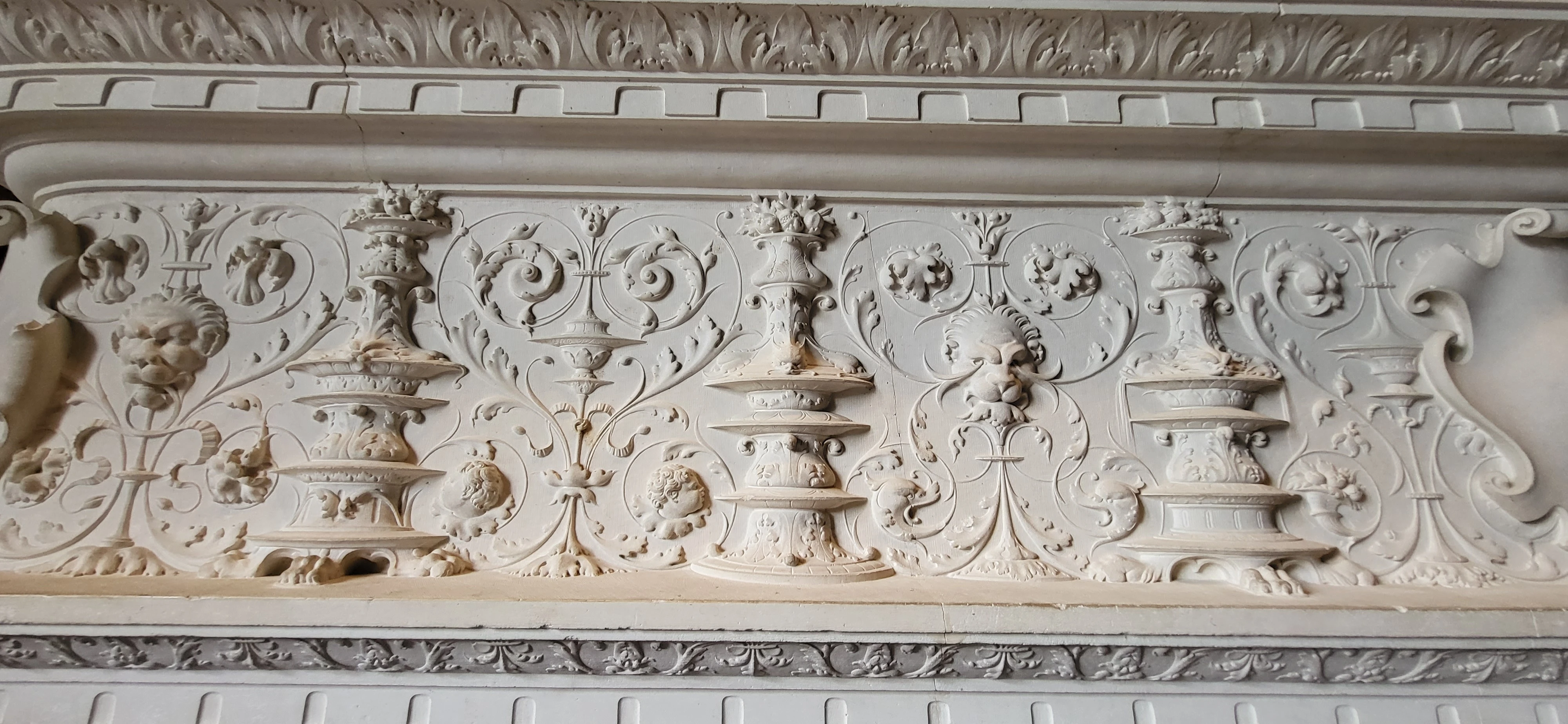 Don't forget to look at the details. Sculptures are everywhere at Chenonceau and they are subtle. Photo chosen by Monsieurdefrance.com: Jérôme Prod'homme (c)
Don't forget to look at the details. Sculptures are everywhere at Chenonceau and they are subtle. Photo chosen by Monsieurdefrance.com: Jérôme Prod'homme (c)
History of Chenonceau
Château de Chenonceau Photo par proslgn/Shutterstock
A pleasure castle on top of a fortress.
Before the wonder we see today, there were several castles in Chenonceau. Fortified castle to control (and tax) the passages on the Cher, the river that passes under the bridge. Of these castles of the Middle Ages, there is little left, except the "tour des marques" a fortified tower. It was Thomas Bohier and his wife, Katherine Briçonnet, who made Chenonceau a place of pleasure.
Restitution of the south facade on the Cher, of Thomas Bohier's castle. Drawing by Félix Roguet (1823 1888).
They bought the place in 1514 and started by razing the old castle and building a brand new one. The one you see on the side, square shaped, on the river bank. Katherine is the real architect of the castle, she manages the domain and the works during the long absence of Thomas who is an important man at the French Court. After the death of Thomas Bohier and Katherine Briçonnet, financial misappropriations committed by Thomas in the royal finances lead to the confiscation of the castle to the heir, Antoine Bohier, by the king of France François 1er in 1535. The castle now belongs to the Crown.
The castle of the favorite
Henri II, King of France, inherited the castle confiscated from the Bohiers by François I, his father. He offered it in 1547 to the woman of his life to please her. This woman is the sublime Diane de Poitiers, his mistress. 20 years older than him. It was her idea to build a bridge to link the castle to the other bank of the Cher. A brilliant idea which will also save the castle from the destruction of the Revolution, since the revolutionaries will be reminded that a bridge is useful...
Probable portrait of Diane de Poitiers by François Clouet (1510-1572).
Diane reigned over the castle and the heart of her royal lover for 12 years. Until the death of Henri II, of an accident of tournament on July 10, 1559 (it takes a lance of wood in the eye...). Diane was chased away from the Court by Henri II's wife, Catherine de Medici, who could not stand that her husband loved another woman, she who was in love with him. She recovers the domain.
The Queen covers the bridge of the favorite.
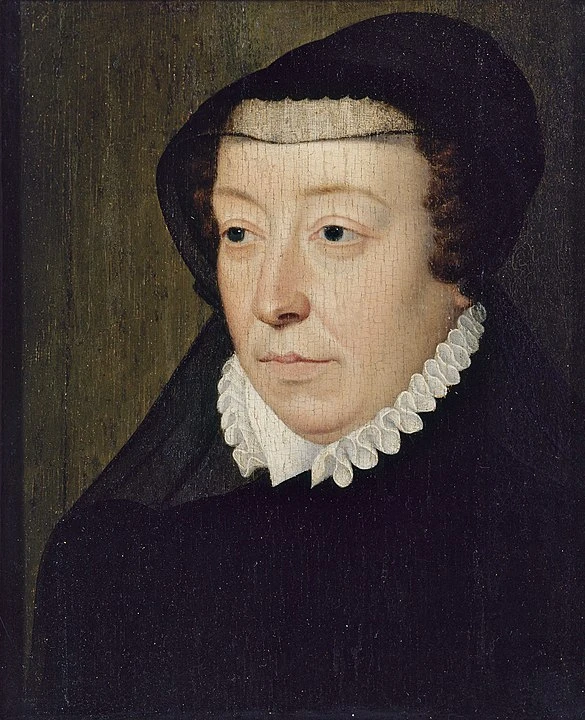
Catherine de Medici by François Clouet (after 1559).
Catherine de Medici wife of Henri II takes her revenge at the death of her husband. She chased Diana and took the castle in 1559. She gave the building its current appearance from 1576 by covering the bridge created by her rival. She decided to create brand new gardens.
Here, the widowed queen, dressed in black, dominates the court. She knows everything thanks to her "flying squadron", these pretty women who are all devoted to her and whom she sends to seduce the men of the Court to collect pillow talk. These confidences are brought back to her and allow her to know everything and therefore to be always one step ahead. In Chenonceaux, Queen Margot, queen of pleasure, Marie Stuart, the beheaded queen, also passed by... These are truly the great hours of Chenonceau royal residence.
Château de Chenonceau Photo par Antoine2K/Shutterstock
The White Queen
It is in Chenonceau that Louise de Lorraine Vaudémont retires after the death of her husband Henri III (assassinated in 1589 by a monk badly named "Clement"). Very much in love with the man who had made her Queen of France, even though she was only a small Lorraine princess from a younger branch and therefore not at all destined for the Crown, Louise never recovered from her widowhood.
Louise de Lorraine-Vaudémont, Queen of France by Jean Rabel - This image is from the Gallica online library.
Dressed in white every day (the color of mourning for the queens of France), she had an oratory built and the walls of her room painted black. Silver-white "decorations" (tears, bones...) were added. At her death, the castle, for a time coveted by Gabrielle d'Estrées, mistress of Henri IV, passed to the houses of Vendôme, then Condé.
The castle of Louise Dupin, Madame Pelouze and "Menier" chocolates...
In 1737, the castle of Chenonceau, which belonged to the Duke of Bourbon, who never went there, was sold to the financier Claude Dupin (1686 -1769). His wife, Louise de Fontaine, married Dupin and made it a place of thought. Louise Dupin brought Chenonceau into the Age of Enlightenment and welcomed Jean-Jacques Rousseau here. They worked on women's rights. She was one of the first feminists in the history of France. She saved Chenonceau from destruction by reminding the revolutionaries that the castle was a bridge and that a bridge could always be used. Over 90 years old, Madame Dupin prevented the worst. She said to the revolutionaries "Hey citizens! Don't you know that Chenonceau is a bridge? You have only one bridge between Montrichard and Bléré and you talk about demolishing it! You are the enemies of the public good!" Hats off to you, Madame!
Louise Dupin (1706 1799) by Jean Marc Nattier
Later, in 1864, Madame Pelouze showed her gardens to the whole of Paris. She undertook a renovation of the castle and made it a place of celebrations during the Third Republic. Very "m'as tu vu", she ruined herself by her extravagances, by the "renovation" of the architect Félix Roguet, to the point that, ruined, she was forced to sell Chenonceau at auction. It was bought by the Crédit Foncier de France. The estate passed to the Terry family in 1891, family of José Emilio Terry, deputy of Havana (Cuba) to the Spanish Cortes.
The Menier family entered the castle and saved it.
Then, the Menier family, of the famous Menier chocolate, takes the castle in hand. Henri Menier (1853-1913) bought the estate and offered it to his wife, Hélène Thyra-Sellières, whom he loved passionately. He died only a few months after his acquisition and it was Gaston Menier, his brother, who took over. A patriot, he transformed the gallery into a military hospital during the First World War. His wife, Simonne, was a nurse and took care of the wounded. A few years later, the Meniers, aviation enthusiasts, received Charles Lindbergh, the first man to fly across the Atlantic Ocean.
A poster of the Menier Family / Advertising poster of 1893, created by Firmin Bouisset.
During the Second World War, the Gallery became a point of clandestine passage to the Free Zone. The castle was sometimes affected by the conflict, when, for example, German shells passed through the roofs or when an American plane bombed the area and destroyed the stained glass windows of the chapel which had been saved from revolutionary destruction by Madame Dupin.
The Menier family still owns the castle today. Laure Menier is the Lady of today. She succeeds the ladies who made the castle and she honors them.
It is nowadays one of the most popular tourist places in France. Hundreds of thousands of visitors cross the Cher River every year and take a trip through history by visiting Chenonceau "the castle of the ladies".
Les jardins / Château de Chenonceau Photo par Viacheslav Lopatin/Shutterstock
Chenonceau : info geo websites and schedules.
Château de Chenonceau Photo par Felix Lipov/Shutterstock.fr
The castle of Chenonceau is located in Chenonceaux (with an X, unlike the castle), in Touraine in the department of Indre-Et-Loire.
By road:
The GPS address is Château de Chenonceau / 37 150 CHENONCEAUX. It is located at 210 Kms from Paris (2H00 by the A10), at 33 kms from Tours (30 minutes).
By train :
There is a station in Chenonceaux. You can get there from Tours, or from Paris (about 2H30). The link is here.
Around the castle of Chenonceau
One can discover the most beautiful castles of the Loire. Chambord is at 54 kms (a little less than one hour), Amboise is at 12 kms (15 mn of road), Azay le rideau is at 52 kms (40 minutes).
The websites :
The official website of the castle of Chenonceau (in english).
The schedules of the castle of Chenonceau are here
The rates of the castle of Chenonceau are here. It is necessary to count 15 euros for the visit with brochure, and it is necessary to reserve on the net.
Around Chenonceau
The website of tourism in the Loire Valley
Tourism in Tours (just next door).
Excuse the mistakes of our translator, he is in love today. He don't think very well... Aahhhh l'amour !
Do you like castles ?
Discover here the castles of the Loire Valley that Monsieur de France tells you about.
